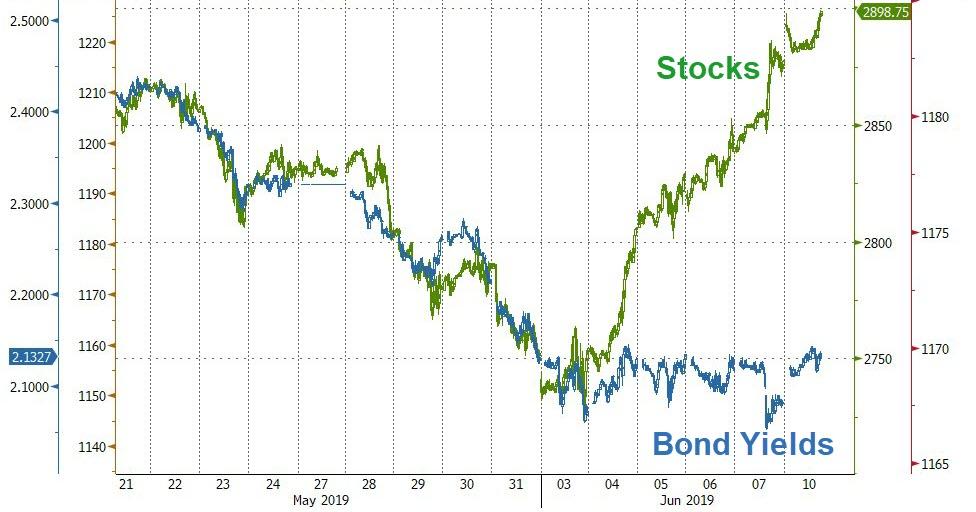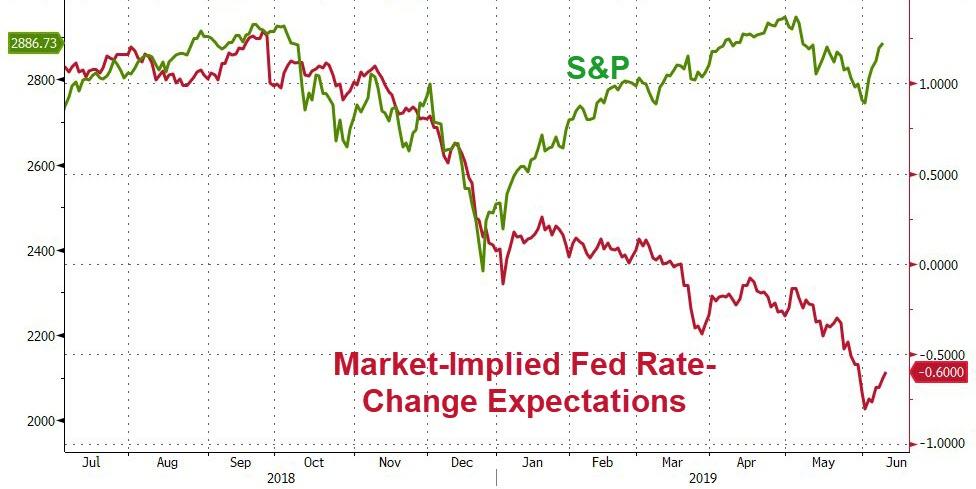With The Dow on course for its longest win streak in 13 months, and Treasury yields refusing to rise, the market appears convinced that The Fed will acquiesce to its needs.
But, as former fund manager and FX trader Richard Breslow notes, as fear has turned to greed, with markets demanding ever more support from their central bank protectorate, the opportunity for dramatic disappointment abounds.
Via Bloomberg,
During a discussion about what the FOMC might say next week, an interesting point was made about the word “patient”.
When it was first used, it was part of the Committee’s move toward a more dovish policy stance. Now, given market pricing and less robust economic numbers, continuing its use is expected to be taken as hawkish. The market has the rate cut bit in its mouth and wants its central bankers to run with it. I can only imagine what futures traders would do with “transitory.”
In reality, patient is exactly what they should be. Promising to do what may become necessary is far more appropriate than effectively pre-committing to a move. If there is anything that has been learned, predicting events accurately is a lot harder than it looks. One central banker’s flip-flop is another’s staying agile.
There are so many different theories positing how the G-20 summit might turn out that, at this point, it’s all just a guessing game. Common sense would suggest some compromise would be in everyone’s best interest. But in this case, who knows? Politicians can be very base when catering to theirs.
And the argument that time is somehow of the essence because it takes time for policy changes to filter through to the economy rings hollow in a world where financial conditions are as important as the other two mandates. This being the case, monetary policy has to be reactive, not proactive. Which explains why the market insists on pricing in multiple cuts rather than just the much-hoped for “insurance cut”. Because if one is required, chances are the market will demand more. Equities won’t stay bid on bad news just because the Fed cut 25 basis points.
While we continue with the debate about how dire is the need for rate cuts, this morning the Small Business Optimism Index printed at its highest level of the year. With all eyes on whether the S&P 500 can surmount resistance which is just above 2900. In truth, if the Russell 2000 can play a little catch-up, all of the major indexes will be looking happy.
The dollar looks offered but DXY is holding well above support. Emerging market currency indexes are trying to press up against resistance levels that they have been struggling with. And WTI crude looks like it will be trapped between $55 and $50, until it isn’t
Which brings things around to rates, the driving force between the bulk of current narratives. Yields have their work cut out to stay still, but momentum to the downside has definitely petered out. Ten-year Treasuries getting back above their 2.21% breakdown level would certainly change the technical look. Or at least turn things back to a two-way conversation.
Even two-year yields have stabilized. Not at all insignificantly, they formed a double bottom low below 1.80% after the disappointing jobs report. Which raises the question, how much is too much?
Traders have been prudent to hedge the event risk in their portfolios. With the added benefit that paying up for bonds has paid off in its own right. And they are probably going to be loathe to cut out of those positions wholesale until they see how the trade fight plays out. And why would they? But while central banks need to stand at the ready and convince investors as well as themselves that they still have adequate tools to deal with trouble, it just wouldn’t pay for them to be overly preemptive. It’s a lot harder for them to stop out of a wrong decision.
via ZeroHedge News http://bit.ly/2Iajuzu Tyler Durden

